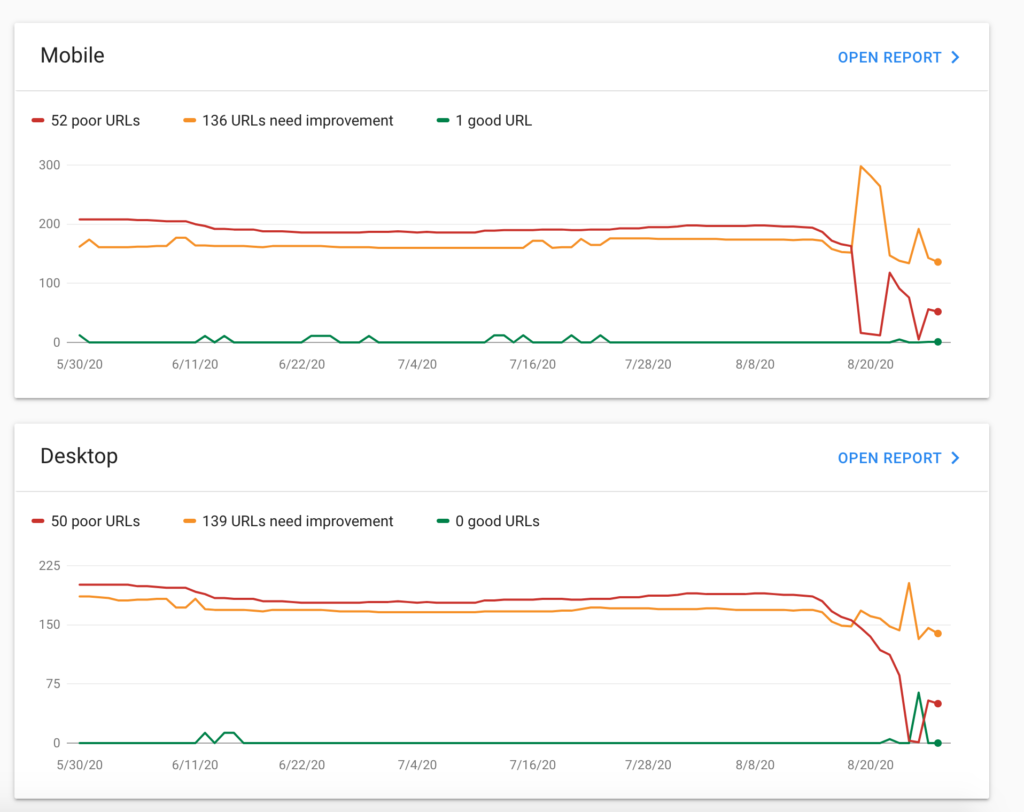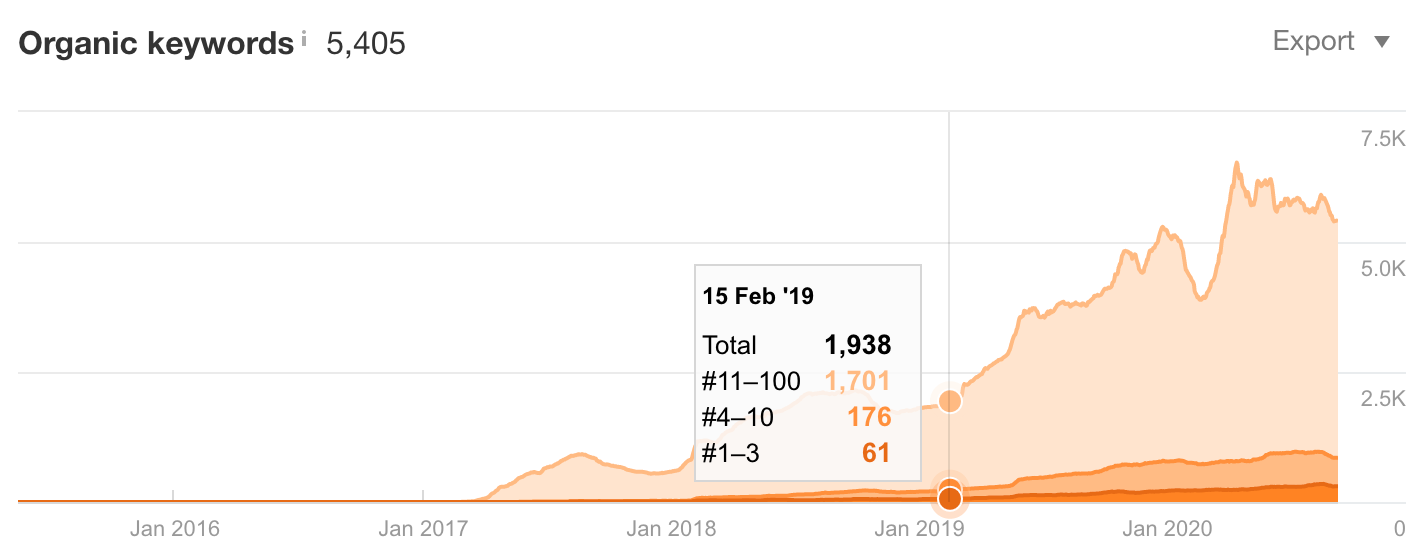Although Google’s algorithm is based on universal guidelines, every market is different from one another.
By this, I mean that an SEO campaign may differ if you’re targeting the search market in the U.S., compared to targeting small international markets like the Danish one.
International SEO practitioners get to learn and try a variety of tactics – most of which are based on American studies that have plenty of prospects and a lot of data.
But this isn’t always the case.
When doing SEO in smaller markets, you’ll meet challenges that can slow down your campaign.
You’ll probably know this from testing different tactics.
This was the case for me and a client in Denmark, and it’s still an issue for many companies all over the world.
You need to use what you have to work with and develop a strategy from there to grow in small but competitive markets.
In this case study, I’ll share the tactics that actually worked in the Danish market – including strategies you can use in your own niche, no matter the size.
The case is based on SEO efforts made by my company’s client, Telerepair.
I’ll share the overall strategy and highlight tactics that hopefully can inspire you to succeed in your own industry.
We’ll go through:
- The market.
- Results achieved.
- Our overall approach.
- Exact tactics (how we did it).
- Tips to get your started (the key takeaways).
The Client’s Market
Our client, Telerepair, is a Danish franchise providing smartphone, computer, and tablet repair in Denmark.
The market consists of stores like them that offer similar services.
Our main goal was (and still is) to dominate the whole repair market locally.
Searching for [iPhone reparation] (Danish expression for “iPhone repair”), our client today owns the first two organic positions and is also placed in the Google Maps twice (when searching in Copenhagen).
And they have four FAQs showing.

This has been the case for a long time now and indicates an approach that is working, and still ongoing, even though the Google algorithm keeps updating.
We’ll begin this study by sharing the overall SEO results so you can see what the following tactics have achieved so far.
Overall SEO Results
From the beginning of our optimization efforts, our client has grown by:
- 407% in top 3 keywords on Google.
- 290% in organic users.
- 44% in inbound links from unique domains.
- 241% in traffic value.
When we started working with Telerepair, all of the three main areas of SEO were lacking.
Technical health score, content strength, and link authority were all very low and needed improvement.
We began the work in the middle of February 2019 and every month after that, the domain has continually shown better results in these three areas.
The following graph shows the increase in organic top 3 keywords since we began:

Overall Approach
In the beginning, our main goal was to be the thought leader in Denmark on everything related to iPhone repair.
We took an approach to target around 20-40 key areas in this market – all a mix of overall keywords + related long-tail keywords.
But like any SEO strategy for a large site, it needs to be a holistic improvement.
Therefore our approach focused on:
Technical Optimization
What We Did
In order to have the best overall picture of the technical structure, we did a site audit, in the beginning, to see its Health Score rating.
When doing a site audit you’ll find errors, warnings, and notices.
We started with the most important issues – the errors.
Errors could include:
- 404 broken pages.
- HTTP issues.
- Missing meta descriptions.
Also, Google announced their (relatively) new Core Web Vitals report in Search Console including:
- Largest Contentful Paint (loading – should be below 2.5 seconds).
- First Input Delay (interactivity – should be below 100 milliseconds).
- Cumulative Layout Shift (visual stability – should be below 0.1).
Looking at the Health Score and Core Web Vitals, our development team improved the overall user experience on the site.
The Results
Our health score has increased from 72 to 96 during the last 6 months:

Furthermore, the Core Web Vitals changed from showing 188 URLs that needed improvement to only showing “Good” URLs.
This indicates a great page experience that will help the site when Google turns the Web Vitals report into ranking factors.
Before Core Web Vitals Optimization:
 After Core Web Vitals Optimization:
After Core Web Vitals Optimization:

Content
What We Did
We started with a content audit, looking for low performing pages in terms of:
- Pageviews.
- Organic sessions.
- Followed links.
This gave us information about what pages needed improvement in terms of content updates, and also link building efforts (I’ll come back to this in a minute).
After cleaning up the old content, we took the time to focus on the “new” content creation process.
First, we did a Content Gap Analysis to see what the competitors ranked for – but where our client didn’t.
This gave important keyword areas we were missing out on and what new content should be produced.
Since Telerepair has a lot of repair products we created descriptions for every product and category page.
Here you see how the exact product page looks like with content:

Furthermore, we made sure to use internal links from the category pages to the exact models to help both users and bots find important information.

But like everything in SEO, we will not see results unless we show some consistency in our content approach – especially if the number of links is supposed to grow.
So we created a blog universe in order to make quality content every month based on industry news and analysis.
Here, we used blog posts to gain links.
From there, we added internal links to the “money pages” that we wanted to rank.
Here is how that looks.

The Results
Using these consistent tactics, our client has grown from ranking on 1,938 different keywords to now rank on 5,405 keywords.

Link Building
What We Did
The last part of the roadmap focused on increasing domain authority (or domain rating).
The approach we used was link building – regardless if the site was American or Danish.
We started with a link audit, which included comparing competitor links with ours and looking for possible toxic links.
From here, it was all about using the lowest hanging fruits in a market with a small number of prospects.
Because when doing link building in a small market like the Danish one, the big tactics from international industry experts may not work as well.
For example, the well known broken link building approach for our client showed only two relevant opportunities.
Had we been in the U.S. market and searched for American competitors in the iPhone repair niche, I bet we would have found a lot more prospects to target.
Therefore, we needed to use tactics that could actually work.
We used the following three approaches:
1. Press Approach
The press approach is all about digital PR and finding trending topics.
In the case of Telerepair, something that suddenly became even more important during COVID-19 was bacteria on smartphones.
So we created a landing page about cleaning smartphones in order to avoid the spread of bacteria.
The content was based on our client’s expert knowledge.
We created our “best tips” and shared them with the big news sites in Denmark.
2. The Give & Take Approach
The give and take approach is about claiming links based on every outgoing link you may have.
As it often is with content, a strong and relevant outgoing link only strengthens the authority of the content you’re creating.
Here you can reach out to the sites you’re linking to and share the link with them.
From there, highlight an article on their site where a link back to one of your articles would make sense.
Because you just have created a link for them, this could be one more type of low-hanging fruit.
And it could potentially be an authoritative link because you decide who you’re linking to in the first place.
3. Reclaim Lost Links
Sometimes links disappear. This will happen to every domain at some point.
It could be because the site changed it or just deleted the link.
This was the case for Telerepair. So we went out and asked for the lost links again.
Sometimes, when links get lost, it isn’t on purpose.
So reclaiming lost links is another way to capture low-hanging fruit in many cases.
For Telerepair, this became a bonus factor.
The Results
All of these tactics worked so well that we increased the amount of referring domains by 44% (so far), which is a great amount in a market with few prospects:

Looking at the growth the last year we have seen an increase of 150 keywords in the top 3.
All keywords have high business value for our client – and therefore a high value for us.

These rankings also increased traffic.
Comparing July this year (2020) with the year before (2019) it showed an increase of 290% in organic users.

Taking these tactics and results into consideration, try to think about your own important keywords and the business value behind them.
Ranking for 150 of those keywords can increase not only traffic but also the revenue (a lot).
And isn’t that what it is all about?
Tips to Get You Started
In every successful SEO roadmap technical SEO, content creation, and link building are the main factors.
But the effectiveness of each tactic can vary.
Smaller markets like the Danish one increased the need for creativity and out-of-the-box thinking.
Key takeaway: Always focus on the tactics that actually work for your market.
It isn’t about doing as many different tactics as possible but about mastering the ones that work for you or your client.
This will create results in both big and small markets and keep you ahead of your competitors in the long run.
More Resources:
- Link Building for SEO: A Complete Guide
- 12 Reasons Why Your Business Absolutely Needs SEO
- 101 Quick & Actionable Tips to Improve Your SEO
Image Credits
All screenshots taken by author, October 2020

![How to Dominate SEO in Small Markets [CASE STUDY]](https://www.searchenginejournal.com/wp-content/uploads/2020/10/how-to-dominate-seo-in-small-markets-5f7de5ba707c7.png)



![AI Overviews: We Reverse-Engineered Them So You Don't Have To [+ What You Need To Do Next]](https://www.searchenginejournal.com/wp-content/uploads/2025/04/sidebar1x-455.png)